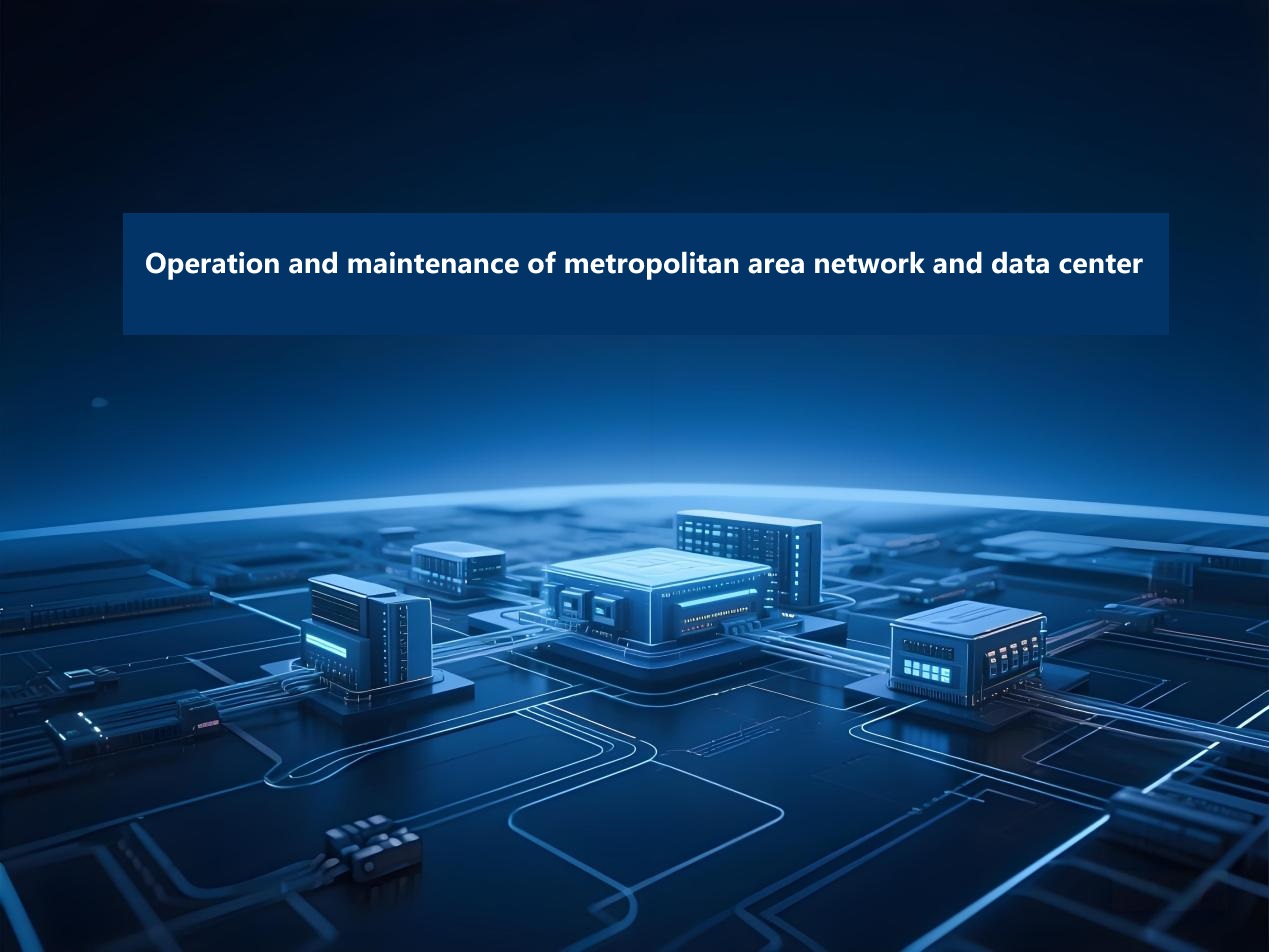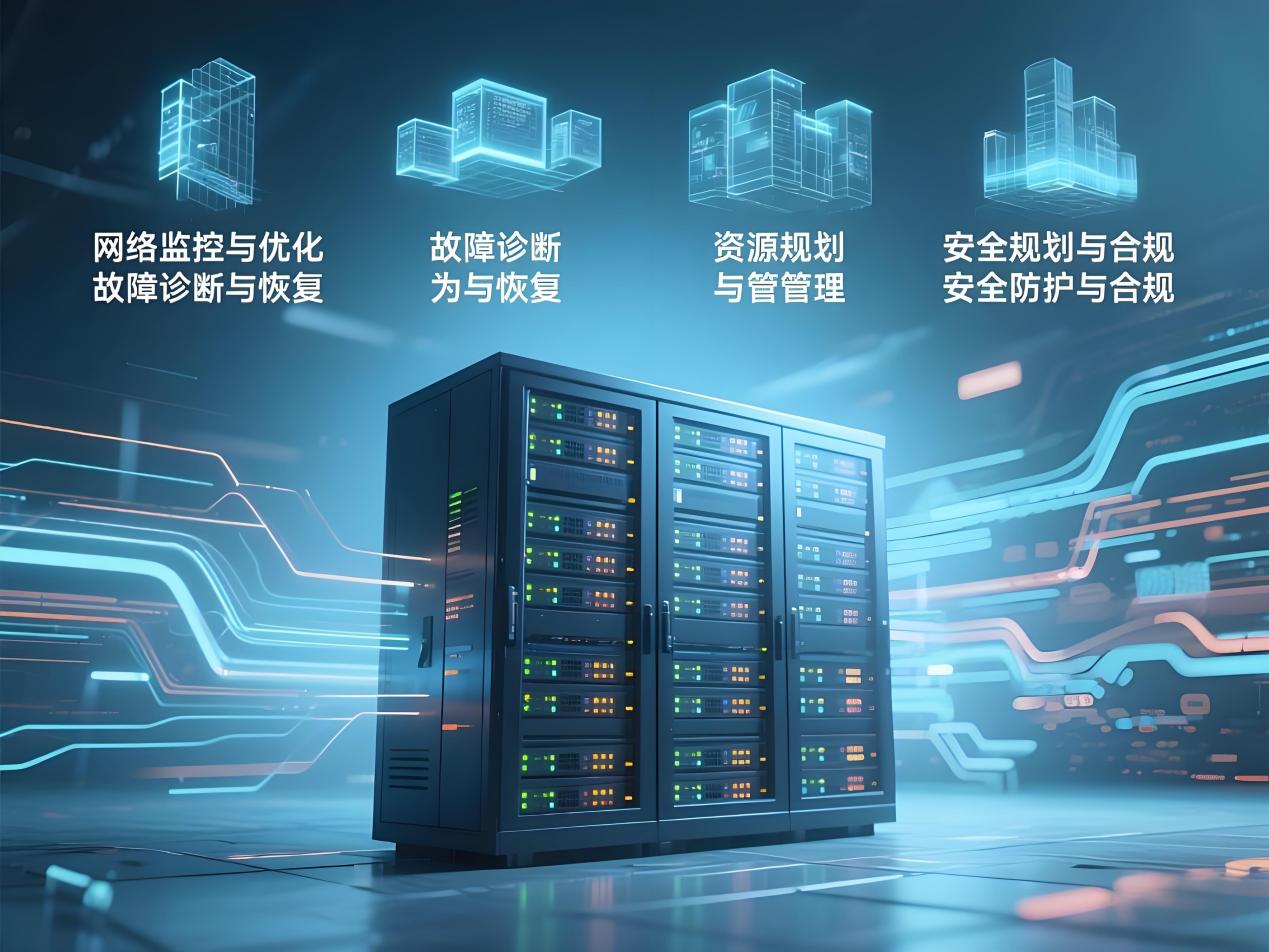Solution Background
As core infrastructure for enterprise digital transformation, metropolitan area networks (MAN) and data centers carry critical business systems, data exchange, and cloud computing services. With the rise of 5G, IoT, and other technologies, enterprises are facing explosive growth in network traffic, an expanded equipment base, and increasing security threats. Traditional, reactive O&M models can no longer meet the demands for high availability, low latency, and rapid response. Therefore, professionalized O&M services for MAN and data centers have become a key pillar in ensuring business continuity and user experience.

Solution Overview
This O&M solution is built around standardized processes, advanced technical tools, and expert services, providing full lifecycle management for MAN and data center environments. Core services include:
- Network Monitoring & Optimization: Real-time monitoring of link quality, traffic load, and device health.
- Fault Diagnosis & Recovery: 24/7 incident response with a tiered handling mechanism for rapid issue resolution.
- Resource Planning & Management: Capacity forecasting and dynamic resource allocation based on business needs.
- Security & Compliance: Vulnerability scanning, intrusion detection, and support for MLPS 2.0 compliance.

Solution Highlights
- Full-Stack Coverage: Unified management across MAN layers (access, aggregation, core) and data center components (servers, storage, virtualization). Compatible with mainstream vendors (Huawei, H3C, Cisco, etc.)—avoiding vendor lock-in or platform silos.
- Efficient Response Mechanism: Automated monitoring tools + expert teams ensure MTTR ≤ 30 minutes. SLA-backed services guarantee ≥99.95% availability for critical business systems.
- Cost-Effective Control: Offers flexible options: on-site O&M, remote managed services, or hybrid deployment, reducing labor costs by 20–40%. Resource utilization analysis tools help reduce unnecessary investment by 15% or more.
- Trusted Security Assurance: Active-active disaster recovery architecture with RPO < 5 minutes. Regular penetration testing and security hardening reduce security incidents by 70% annually.
Customer Pain Points & Challenges
- Low O&M Efficiency: Manual inspections are time-consuming; fault diagnosis relies on experience, with an average resolution time exceeding 2 hours. Multi-vendor equipment complicates management, with fragmented tools and high coordination costs.
- Unbalanced Resource Utilization: Poor resource allocation during traffic peaks and valleys leads to performance bottlenecks. Legacy systems face compatibility issues with newer platforms, making upgrades risky.
- Security & Compliance Pressure: Evolving external attack methods overwhelm traditional firewalls, especially against zero-day vulnerabilities. Compliance requirements (e.g., MLPS 2.0, GDPR) are strict, with long audit remediation cycles.
- Uncontrollable Costs: Outages cause major business losses—each downtime incident can cost over ¥100,000.Lack of long-term planning leads to redundant investment and resource waste.
Customer Benefits
- Enhanced Business Stability: Network downtime reduced by 90%; business continuity for critical applications reaches 99.99%. Traffic scheduling efficiency improved by 35%; end-user latency reduced by 40%.
- Upgraded Management Efficiency: Standardized O&M processes boost cross-departmental collaboration by 50%. Automatically generated visual reports accelerate decision-making by 60%.
- Optimized Total Cost of Ownership (TCO): O&M labor costs cut by 30%; hardware ROI cycle shortened by 20%.Resource waste reduced by 25%, saving over ¥1 million annually in IT expenditure.
- Long-Term Risk Control: Security patch cycle shortened from 7 days to within 24 hours. Achieved MLPS 2.0 Level 3 certification with a 100% first-time audit pass rate.